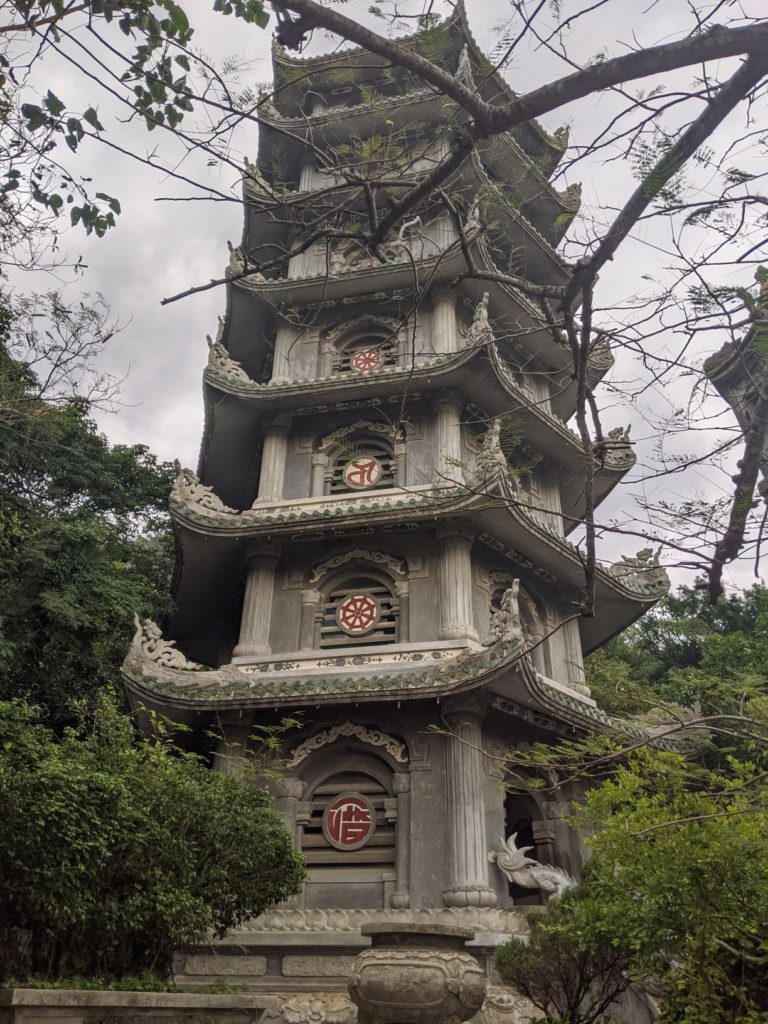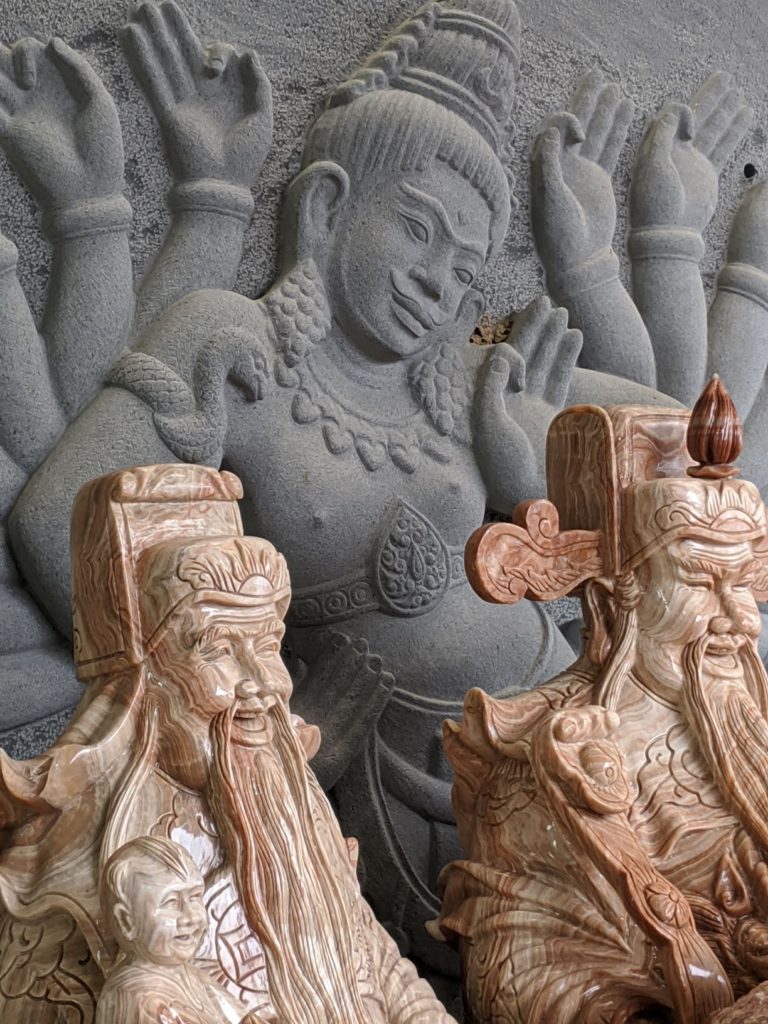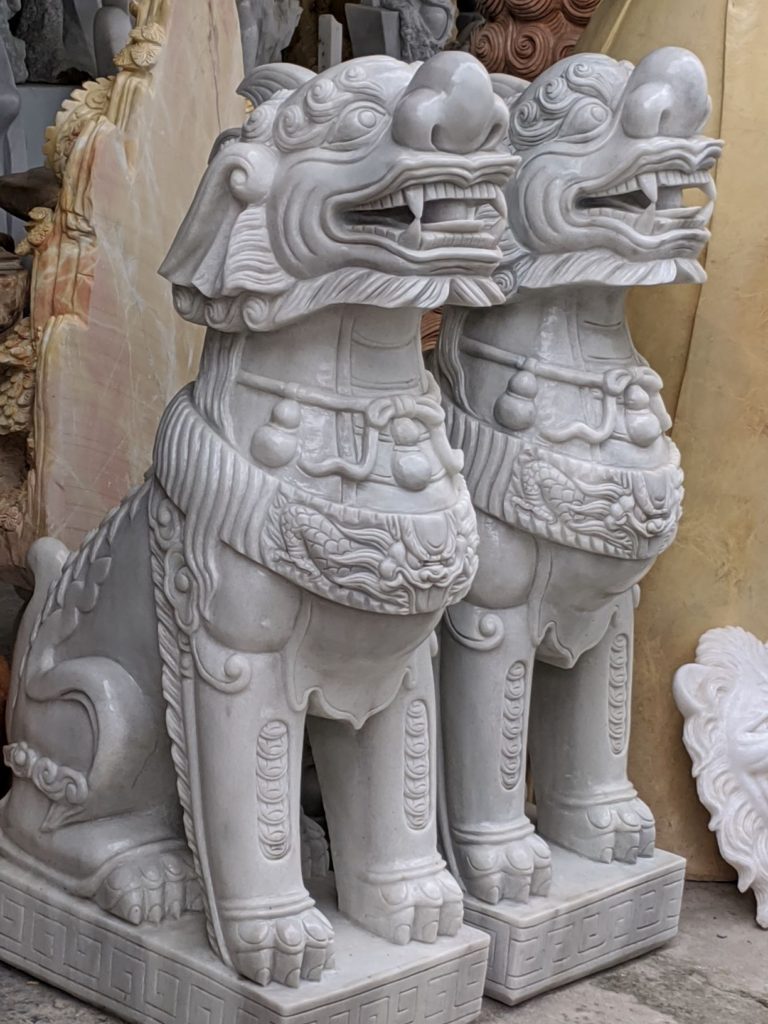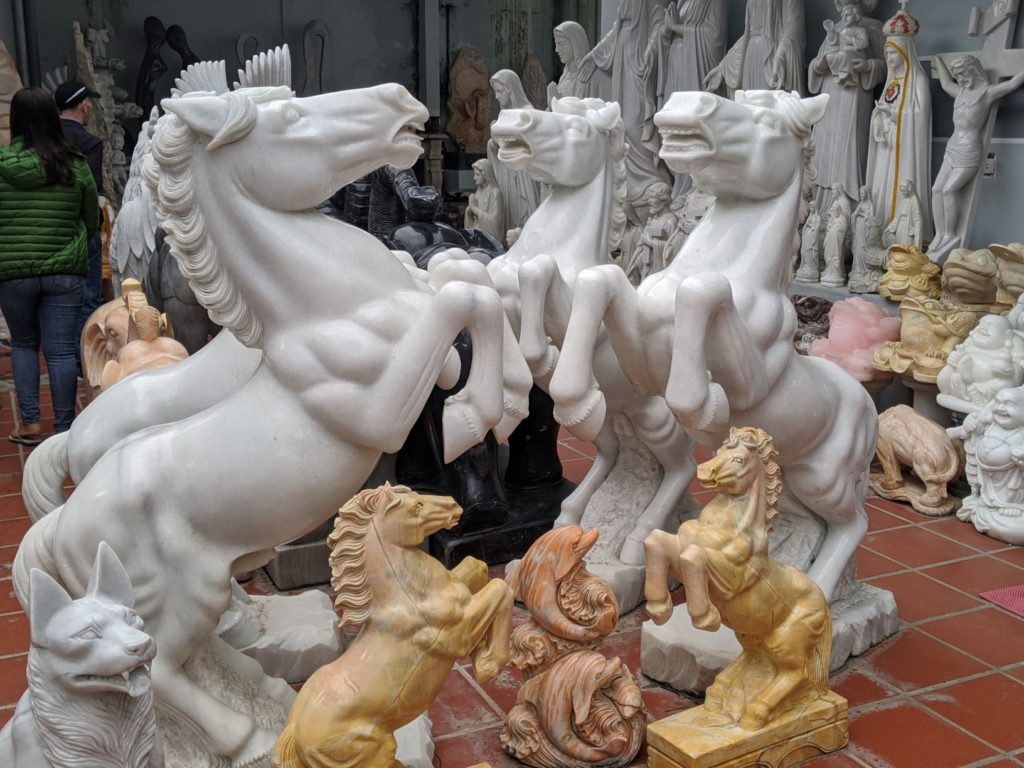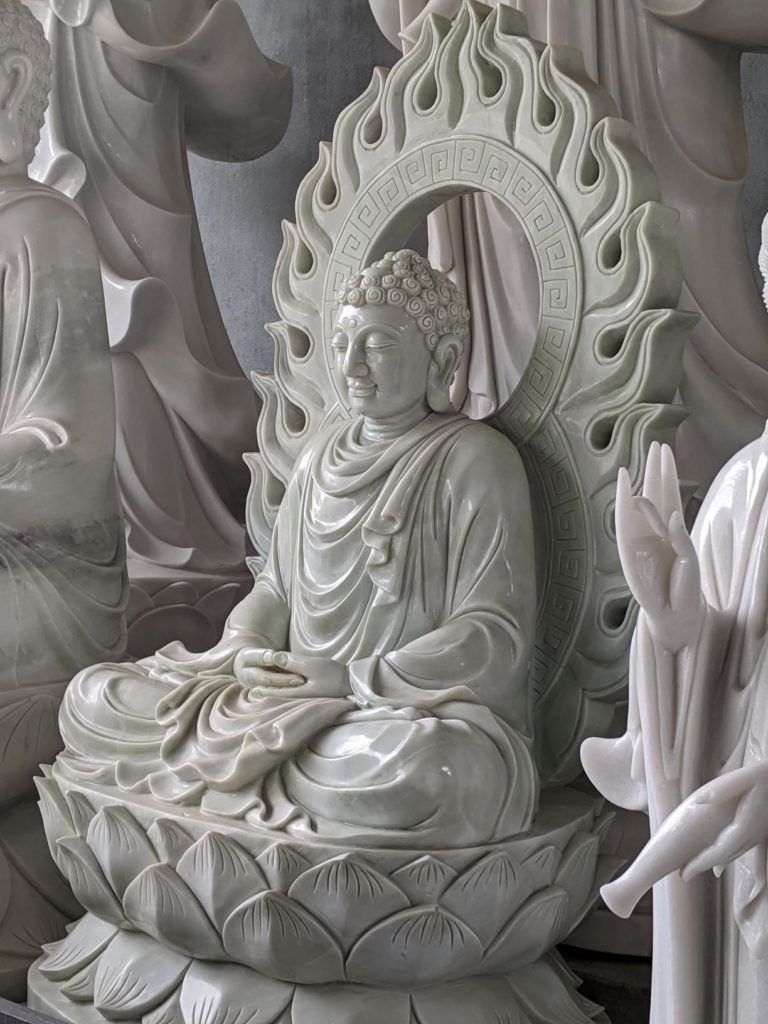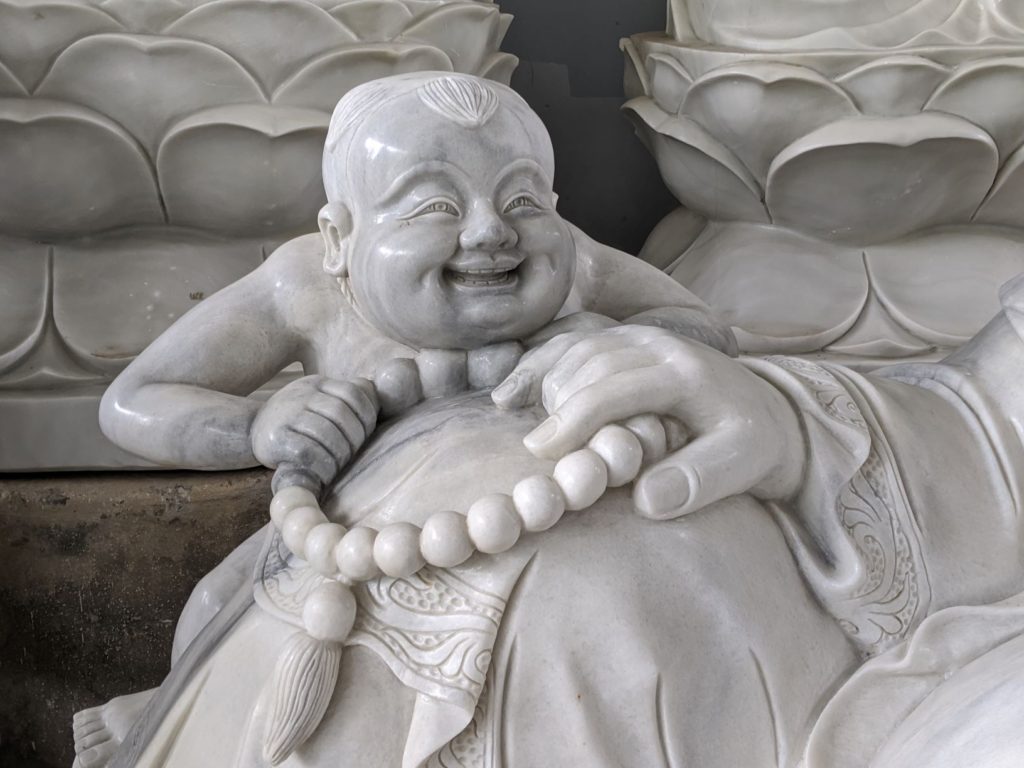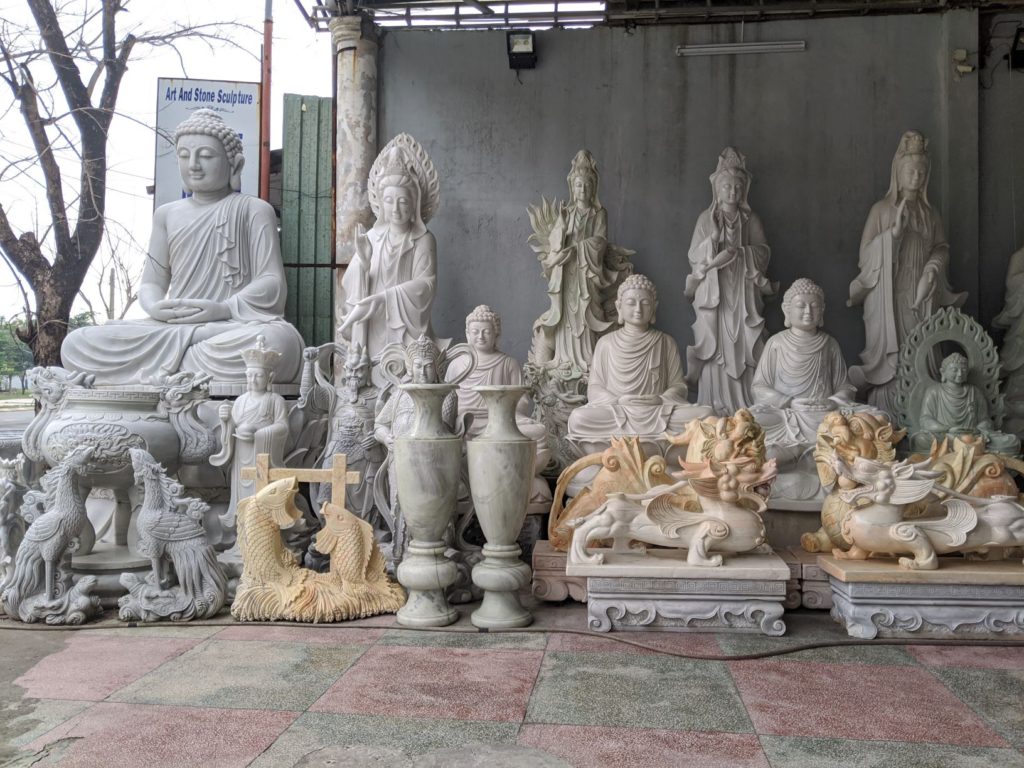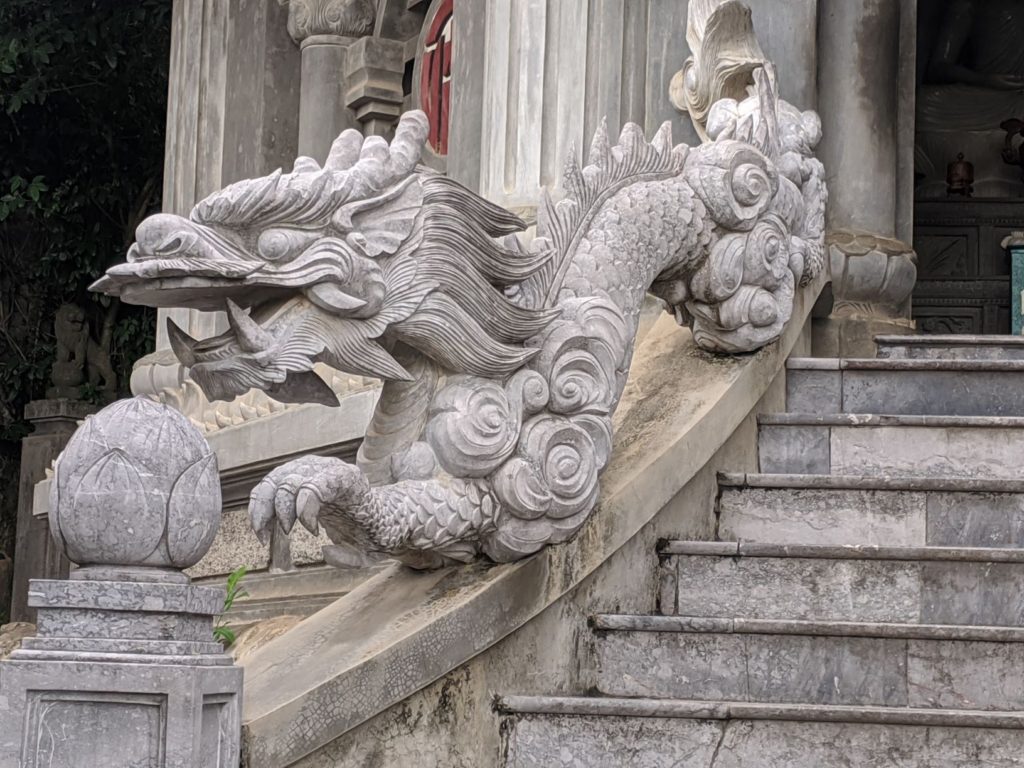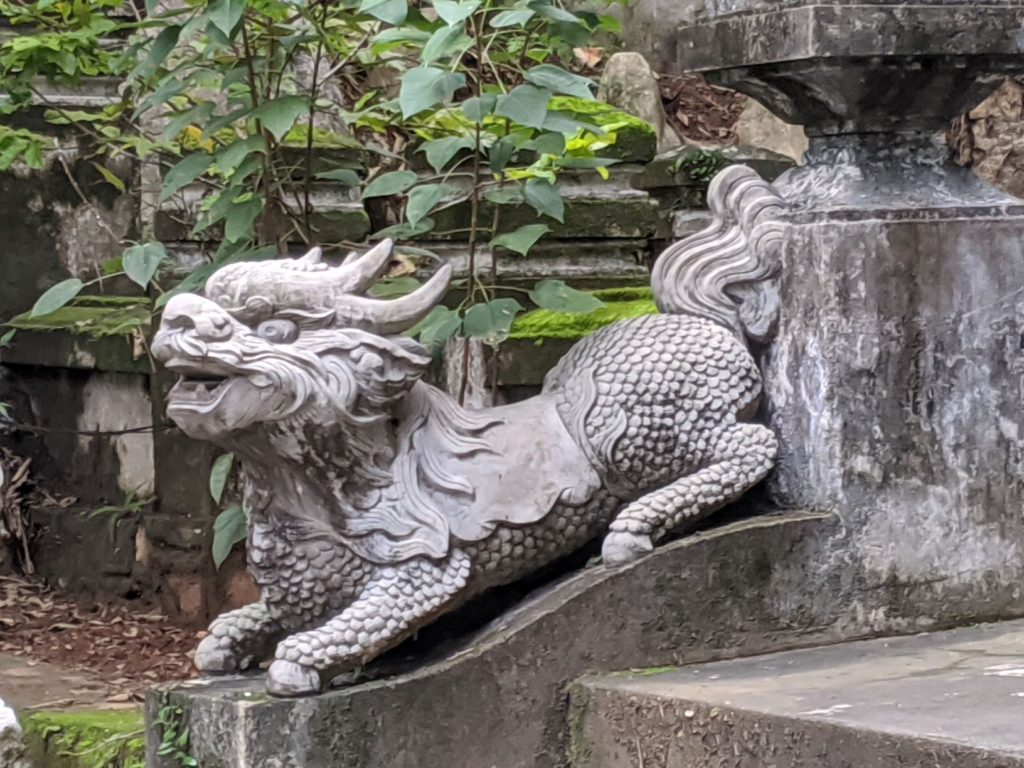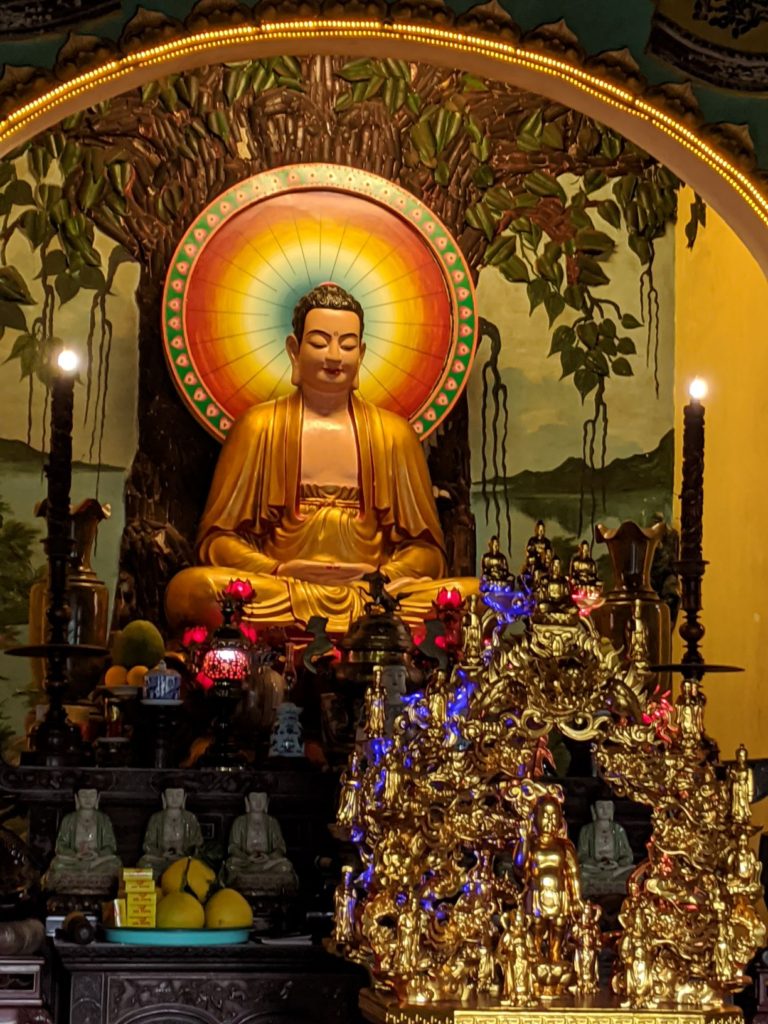We didn’t discover the interesting area around the temple until the second time we went there, and had more time to wander.
There were, to begin with, several statues of Buddha (or perhaps of Bodhisattvas).
A short digression is perhaps in order here. Dan and I are illiterate in Japanese, and we have gained a whole new–and sympathetic–understanding of the dilemmas that must face functionally illiterate people in our own country. We were certainly able to get around fine in Japan. Most public transportation have signs in English as well as Japanese; and people were also wonderfully friendly and willing to help. We also understood where we were and what we were seeing, at least in broad terms. But the details on explanatory signs (and most menus!) were too much for us. So I present here the beauty, or cuteness, of what we saw–and the Japanese are very, very good at both beauty and cuteness–but no details. Just as we experienced it.
And now on to the Buddhas. Or Bodhisattvas.





Finally, my favorite. I actually don’t know who this little guy is, or anything about him. I just know: you gotta love him!

There was a small but lovely landscaped area, with a stream running through it.

The stream had myriads of red-and-white fish in it.

And the fish were hungry.

There were also numerous other objects of mystery.

One small shrine I do know about (because they were kind enough to post its story in English as well as Japanese). Once upon a time, it seems, in the early eighteenth century, a housewife, digging in her garden, discovered buried there a jar full of gold coins. She worried that she and her husband would rely too heavily on those coins and become lazy and lose what they had. So she buried the coins again, and with this mindset, she and her husband worked hard and became very wealthy. They placed a statue of the Bodhisattva Jizo on the spot where they buried the coins. Today, this shrine is built over those coins.

It contains the statue of the Bodhisattva (and several other statues of him, too). People come here to pray for success in their business enterprises.




